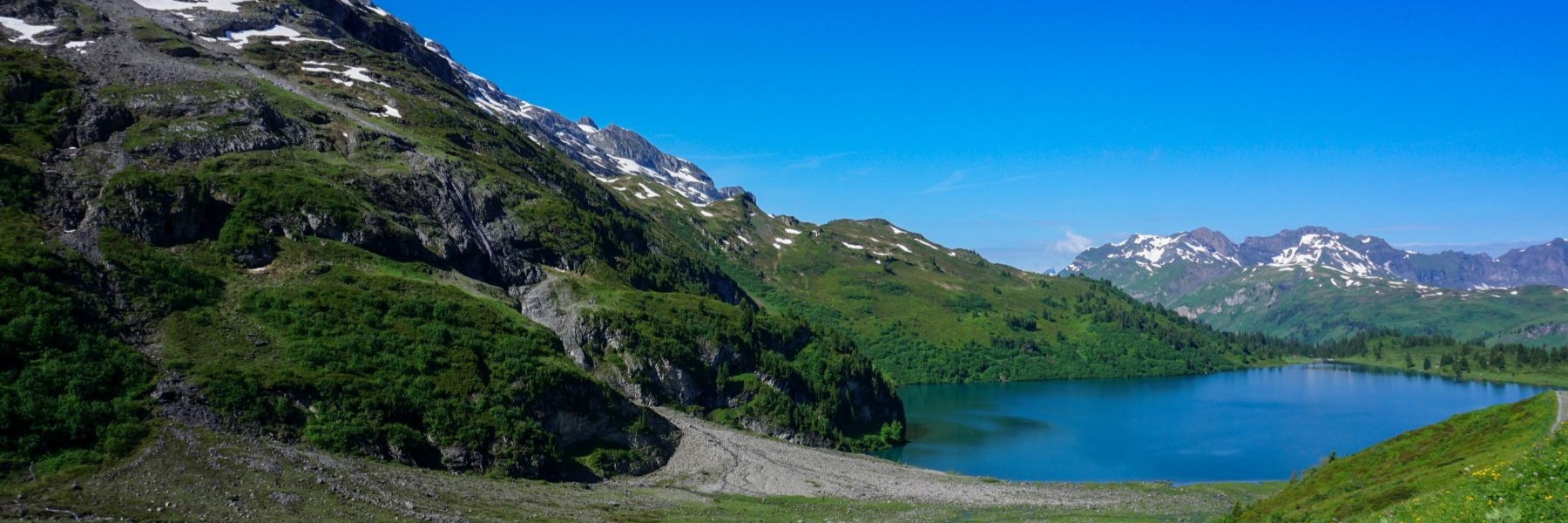The
hike that I am going to present here crosses some emblematic places of the mountains
of Neuchâtel. Even if this hike is described as a single outing, it can easily
be split into several parts if the duration or the elevation gain should be too
much.
We started
this hike in the village of Les Planchettes, easily accessible by postal bus
from La Chaux-de-Fonds (even if, on Sundays, the first bus only arrives at
10:30).
From the
village of Les Planchettes, it is a short walk that takes you to a very popular
destination in the Neuchâtel mountains: the Roches de Moron. Indeed, the view
of the Doubs, the Châtelard and the Châtelot dam is striking. The underbelly is
that this place is easily accessible by car and that one therefore rarely finds
oneself alone. For those who would like to contemplate the landscape in a more
solitary way, it is possible to descend a little in the direction of the Doubs
and reach the edge of the cliff.
From the
Roches de Moron, we climbed towards Galandrue to take the Pillichody trail,
another famous destination in the region. We had heard a lot about it, and we
were very curious to follow this trail. Indeed, the trail is much more
mountainous than most trails in the region and it is mark-signed as a mountain
trail (thus white-red-white).
At the
start, we are faced with a few warning signs (even the sign at the junction
mentions “impassable in winter”). We didn’t really know what to expect.
Initially,
the Pillichody trail follows a forest track crossing the hillside and even going
slightly downhill. I think this is the reason that invites people with little
experience to follow this trail. Later, the forest track turns into a path, it
does not take long to reach the CAS belvedere and it is worth going there,
despite the dizzying situation. Indeed, there is an unobstructed view of the
Doubs, and further along the trail, there are no longer really such
unobstructed viewpoints, except at the Belvédère des Recrettes.
After going
up from the CAS belvedere, one reaches a path that becomes increasingly narrow,
but relatively comfortable. In addition, it evolves on a very wide ledge, and one
very rarely finds oneself at the edge of the cliff. However, the path crosses
some earthy couloirs. I can imagine that in winter, with snow and ice, the
trail becomes totally impassable without mountaineering equipment (ice ax and
crampons, at the very least). I can also imagine that crossing these couloirs
could be very problematic at the beginning of the season before the path has
been laid out with shovels and pickaxes. Even if the straight distance of the
trail is not very big, the actual distance should not be underestimated: one
keeps alternating between spurs and couloirs. At the exit of the Pillichody
trail, one might think of a joke, since one suddenly finds oneself in uneven
pastures. At the end of the path, it is worth going to the Belvédère des
Recrettes. Although the view is not as wide as from the CAS lookout, the view
is worth it.
Further on,
we descended towards Lac des Brenets, a very popular destination that we need
not describe further. The place is certainly very beautiful, but very busy,
which makes it a bit unpleasant. It should however be mentioned that to reach
the banks of the Doubs, one must go down the Combe à l’Ours. This vale is
unmistakably cold, even during the hottest summer days.
After
passing Lac des Brenets and Les Pargots, we went to visit another emblematic
destination in the region: Les Goudebas. Indeed, the Bied du Locle river (which
further down is called La Rançonnière), takes its ease before flowing into the
Lac des Brenets. We have at this place, a protected swamp which is just below
the Brenets. Going up along the swamp to the direction of La Rançonnière, one
enters an increasingly narrow valley. It is impassable beyond the Comboles and one
must climb towards the Brenets train railway line to… descend again towards the
Rançonnière power station.
The
Rançonnière power plant is old, since it is the first power plant in the canton.
The idea was to turbine the water of the Bied du Locle. The problem is that the
flow of this stream is very variable, and it is sometimes completely dry. This
is the reason why they have started to turbine the water leaving the water
treatment plant in Le Locle.
Beyond the plant,
the route first follows the access road to the plant then a steep path crossing
the Route des Brenets. It leads to another destination in the mountains of Neuchâtel:
the Rochers Voumard. This is the wall of rocks dominating the road leading from
Le Locle to the Col des Roches, clearly visible when you go to Les Brenets, or to
France. However, the view is a bit disappointing, as trees hide part of the
landscape. Nevertheless, the place is worth a detour.
After Les
Roches Voumard, one follows the ridge to reach the Petits Monts neighborhood,
before descending to Le Locle train station, which could be reached by taking
the small Brenets train. This is an interesting option if one starts to be
tired along the way.
Itinerary: Les Planchettes – Roches de Moron – Pillichody
trail – Belvédère des Recrettes – Vauladray – Lac des Brenets – Les Pargots –
Les Goudebas – La Rançonnière factory – Les Roches Voumard – Le Locle
Distance: 18Km
Altitude gain: 650m
Duration: 5h 40


 Previous Post
Previous Post Next Post
Next Post